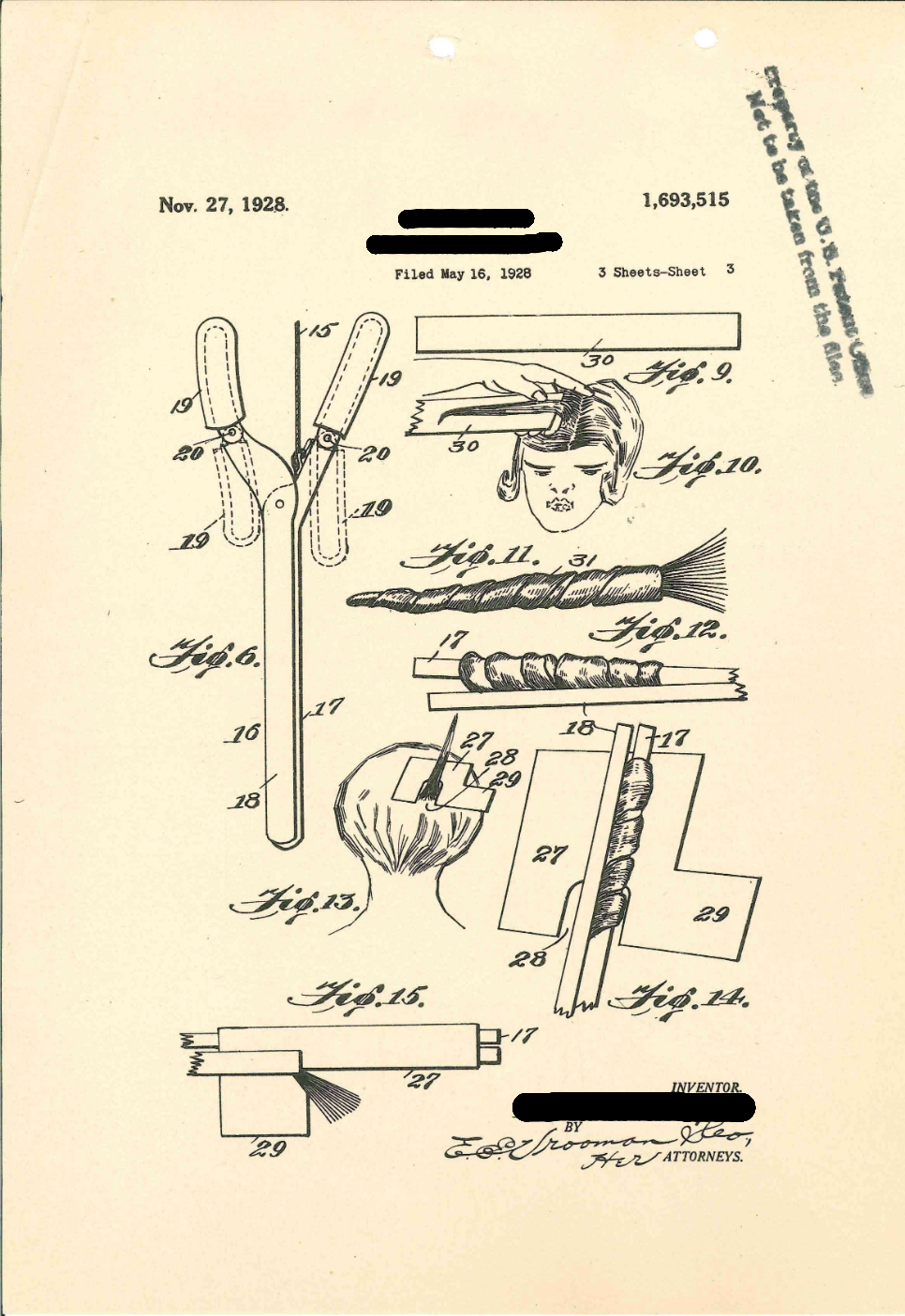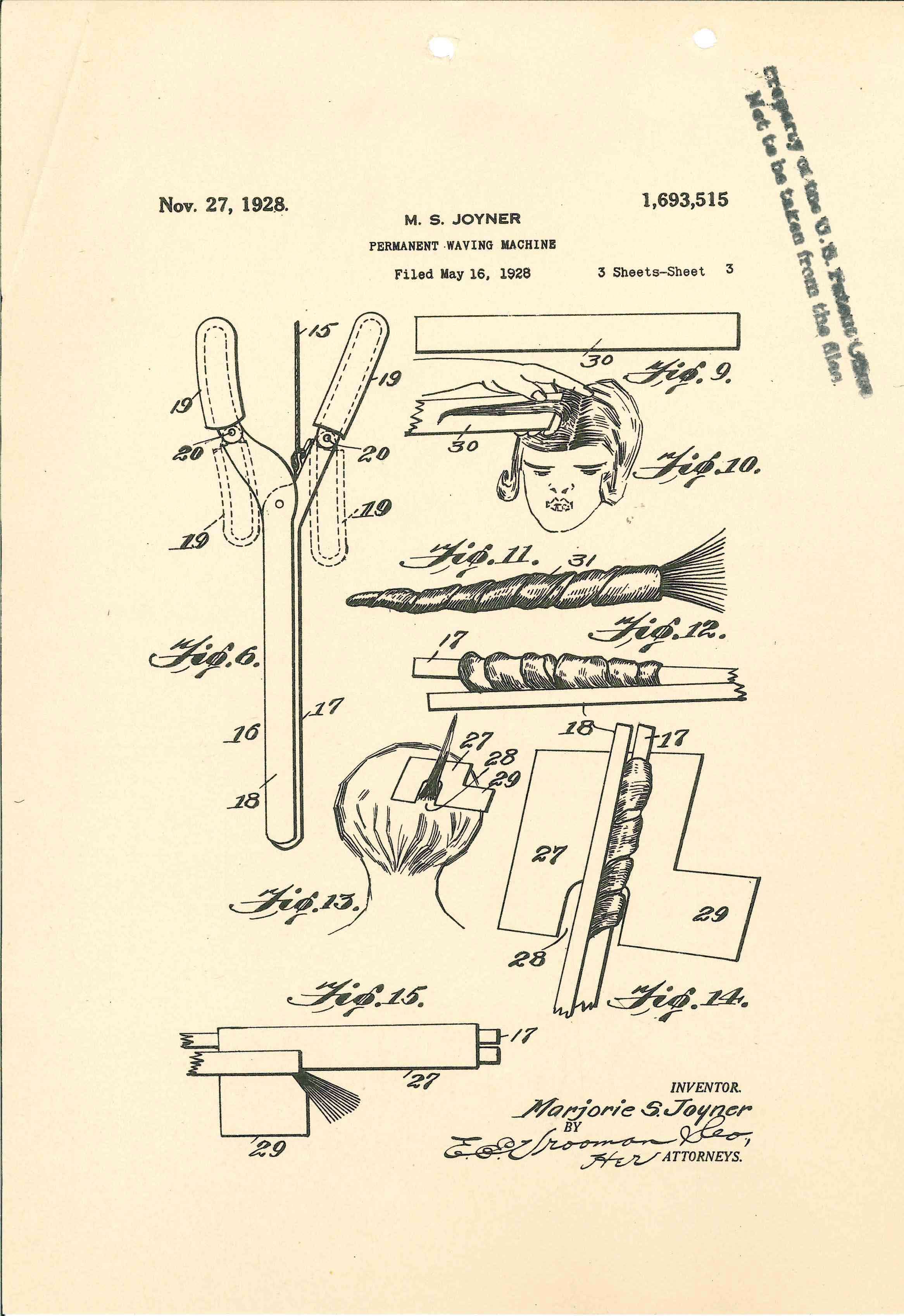What is Patent Number 1,693,515?
Focusing on Details: White Out/Black Out
All documents and text associated with this activity are printed below, followed by a worksheet for student responses.Introduction
You will see a patent drawing for an invention with its name and its inventor's name hidden.Quickly scan this document. What do you notice first?
Name:
Class:
Class:
Worksheet
What is Patent Number 1,693,515?
Focusing on Details: White Out/Black Out
Examine the documents included in this activity and write your response in the space provided.
- Describe the document and the invention it depicts as if you were explaining it to someone who can’t see it.
- Based on what you can see, what do you think is the purpose of this invention? List evidence from the document to explain your opinion.
After you have made a hypothesis, click "View Entire Document" to reveal the invention.
Your Response
1
Activity Element
Marjorie S. Joyner’s patent drawings for a permanent wave machine
Page 2

Conclusion
What is Patent Number 1,693,515?
Focusing on Details: White Out/Black Out
- What positive effects has this invention had?
- What negative effects has this invention had?
Your Response
Document
Marjorie S. Joyner’s Patent Drawings for a Permanent Wave Machine
5/16/1928
After studying and working in the beauty culture industry for some time, Marjorie Joyner met and quickly joined Madam C.J. Walker's Walker Manufacturing Company, the largest African American-owned company in the United States. Marjorie Joyner eventually served as national adviser for the beauty company that employed thousands of African American women across the country selling hair-care products.
While teaching students at the Walker Beauty School in Chicago and traveling as an adviser, Marjorie Joyner had the idea to create a new device. One evening as she was making a pot roast, Joyner thought there must be a way that allowed multiple rods to be applied to the hair at once, greatly reducing the time needed to create curls and waves for women’s hair.
After tinkering and experimenting with different setups—using her pot roast rods—Joyner came up with her one-of-a-kind permanent wave machine. Not realizing she should patent her unique device, Joyner used it for a few years before filing for one. She submitted a petition and drawings on May 16, 1928.
While teaching students at the Walker Beauty School in Chicago and traveling as an adviser, Marjorie Joyner had the idea to create a new device. One evening as she was making a pot roast, Joyner thought there must be a way that allowed multiple rods to be applied to the hair at once, greatly reducing the time needed to create curls and waves for women’s hair.
After tinkering and experimenting with different setups—using her pot roast rods—Joyner came up with her one-of-a-kind permanent wave machine. Not realizing she should patent her unique device, Joyner used it for a few years before filing for one. She submitted a petition and drawings on May 16, 1928.
This primary source comes from the Records of the Patent and Trademark Office.
National Archives Identifier: 167819674
Full Citation: Marjorie S. Joyner’s Patent Drawings for a Permanent Wave Machine; 5/16/1928; 1,693,515; Patent Case Files, 1/1/1836 - 12/31/1978; Records of the Patent and Trademark Office, ; National Archives at Kansas City, Kansas City, MO. [Online Version, https://www.docsteach.org/documents/document/joyner-patent-drawing-permanent-wave-machine, April 24, 2024]Marjorie S. Joyner’s Patent Drawings for a Permanent Wave Machine
Page 1

Marjorie S. Joyner’s Patent Drawings for a Permanent Wave Machine
Page 2

Marjorie S. Joyner’s Patent Drawings for a Permanent Wave Machine
Page 3

